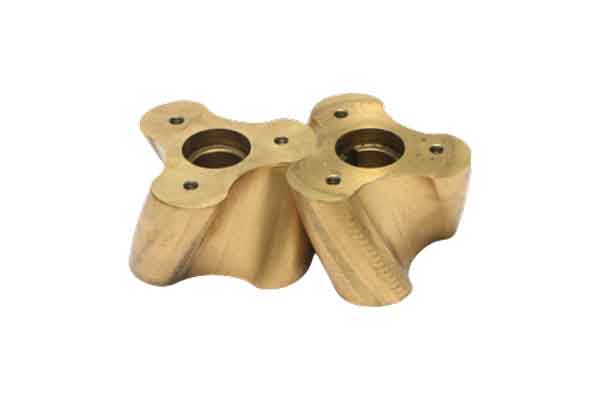Lobe pumps, integral to numerous industries, have seen significant advancements in design and manufacturing techniques. At the heart of these pumps are the lobes, which play a pivotal role in the pump’s operation and efficiency.
The Evolution of Lobe Pump Production
The history of lobe pump production is a tale of continuous innovation. Initially, manufacturers relied on manual methods and basic machinery. These methods, while foundational, had several limitations:
- Inconsistencies: Manual production often led to slight variations between lobes, affecting pump performance.
- Limited Designs: Traditional methods restricted the complexity of lobe designs.
- Time-Consuming: Manual processes were labor-intensive and time-consuming.
However, as technology advanced, so did the methods of producing these essential components, leading to more consistent and efficient production techniques.
The 5-Axis Machining Center: Revolutionizing Lobe Pump Production
The introduction of the 5-axis machining center marked a significant leap in lobe pump production. Here’s why this technology is revolutionary:
- Precision and Accuracy: The 5-axis center can move in five different directions simultaneously, ensuring each lobe is crafted to exact specifications.
- Complex Designs: This technology allows for the creation of intricate shapes and designs that were previously impossible or very challenging to achieve.
- Efficiency: The simultaneous movement in multiple directions reduces production time, leading to faster turnarounds.
- Reduced Waste: Precision machining means less material wastage, leading to cost savings.
Lobe Designs: A Comparative Analysis
Different lobe designs cater to various needs. Their design intricacies can significantly impact the pump’s performance:
| Item | Straight Blade | 3 wings helical | 4 wings helical |
|---|---|---|---|
| Volume Efficiency | Almost 100% | 98% | Only 80% |
| Pulsation | Get pulsation | Pulsation-free | Get pulsation |
| Stability | – | Most stable | – |
Straight Blade: Traditional design, offers high efficiency but can produce pulsations in the fluid flow.
3 Wings Helical: A more modern design, it reduces pulsations and offers near-perfect volume efficiency.
4 Wings Helical: While it offers reduced efficiency, it can be suitable for specific applications where other factors are more critical than efficiency.
Metal vs. Rubber Lobes: A Deep Dive
Lobes can be crafted from various materials, but metal and rubber are predominant:
Metal Lobes:
- Durability: Metal, especially when machined precisely, offers superior wear resistance, making it ideal for abrasive fluids.
- Performance: Metal lobes provide better efficiency, especially in high-demand scenarios, due to their rigidity.
- Temperature Resistance: Metal lobes can handle higher temperatures without deforming.
- Lifespan: Reduced maintenance needs and a longer operational life.
Rubber Lobes:
- Flexibility: Rubber lobes can adapt to irregularities, making them suitable for fluids with suspended solids.
- Noise Reduction: Rubber inherently dampens vibrations, leading to quieter operations.
- Chemical Resistance: Certain rubber compounds can resist aggressive chemicals.
For a more detailed comparison between metal and rubber lobes, check out our comprehensive guide on Metal vs. Rubber Lobe Pumps.
Yaness: Pioneering Lobe Pump Production with 5-Axis Machining
Yaness, a leader in the lobe pump industry, leverages the precision of 5-axis machining centers to produce high-quality metal lobes. This commitment to quality and innovation ensures that Yaness pumps are not only efficient but also durable and reliable. By choosing 5-axis machining, Yaness guarantees that each lobe is crafted to perfection, ensuring optimal performance and longevity.
Conclusion
The advancements in lobe pump production, especially with the introduction of 5-axis machining centers, have revolutionized the industry. The ability to produce high-quality metal lobes ensures that pumps are more efficient, durable, and reliable. Yaness, with its commitment to innovation and quality, exemplifies the benefits of these advancements, ensuring optimal performance in various applications.
FAQs
Q: Why is the 5-axis machining center preferred for lobe production?
A: The 5-axis machining center offers unparalleled precision, efficiency, and the ability to create intricate designs, making it ideal for lobe production.
Q: What are the main differences between metal and rubber lobes?
A: Metal lobes offer superior durability, performance, and temperature resistance, while rubber lobes provide flexibility, noise reduction, and chemical resistance.
Q: How does Yaness ensure the quality of its metal lobes?
A: Yaness uses 5-axis machining centers for precise production, ensuring each lobe is crafted to perfection for optimal performance and longevity.
Q: Are metal lobes suitable for all applications?
A: While metal lobes offer many advantages, the choice between metal and rubber lobes depends on the specific application and the fluid being pumped.



